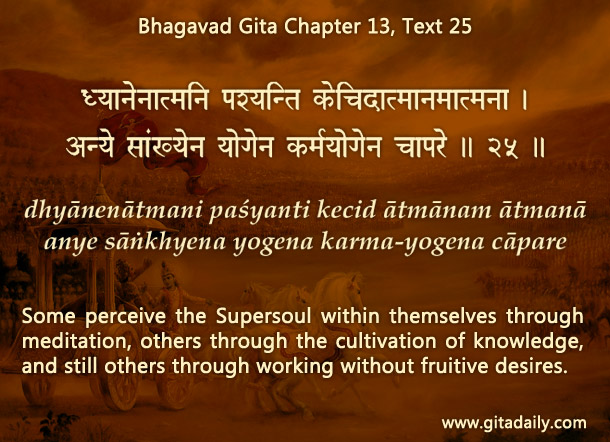Some people argue, “How can I be anything other than my body? When it gets cut, I feel pain; when it touches something soft, I feel pleasure.”
But can we base identification on sensation, as does this argument? Suppose we get engrossed in watching a movie. If a sudden blow hits the hero, we feel as if we ourselves have been hit. Though we experience sensations similar to those experienced by the movie character, we are not that character.
Similarly, philosophical introspection suggests that we are more than our body. The whole body is made of unconscious molecules, so it can’t experience anything. Then who is the experiencer, the sensor of those sensations? The soul, answers the Bhagavad-gita.
Just as we get engrossed in the movie due to our desire to enjoy it, similarly, the Gita (13.22) states that we souls get engrossed in matter due to our desire to enjoy material things. We can easily walk out of a movie theater, but we can’t easily come out of material illusion because it is far more captivating – it makes us forget that we have a life beyond the material.
To experience our non-material side, we need to practice yoga, which curtails our experience of material sensations and channelizes our consciousness towards experience of spiritual sensations. The Gita (13.25) mentions three yogic processes – dhyana-yoga, sankhya-yoga and karma-yoga – and then (13.26) devotes a full verse to bhakti-yoga. Earlier, it (06.47) has declared bhakti-yoga to be the topmost yoga, the yoga that connects us most intimately with the highest spiritual reality, Krishna. Through this connection, we access stimulating spiritual sensations coming from that all-attractive Supreme. By thus practicing and relishing bhakti-yoga, we gain increasing realization of our spiritual identity.
So, to infer our identity correctly, we need to base it not on bodily sensation, but on philosophical introspection and yogic realization.
Explanation of article:
https://www.youtube.com/watch?v=4Wyk4JONmSg


Hare Krishna Prabhuji,
Very nice article.. One question..If we are suffering from bodily pain due to disease or old age, can the pain be alleviated by remembering krishna..but it is very difficult to remember krishna when there is huge pain in the body, we only think how and when we can get relief from the pain.
A similar question is answered here:
http://www.thespiritualscientist.com/2014/11/will-devotional-service-free-us-from-a-painful-disorder/
ys
ccdas